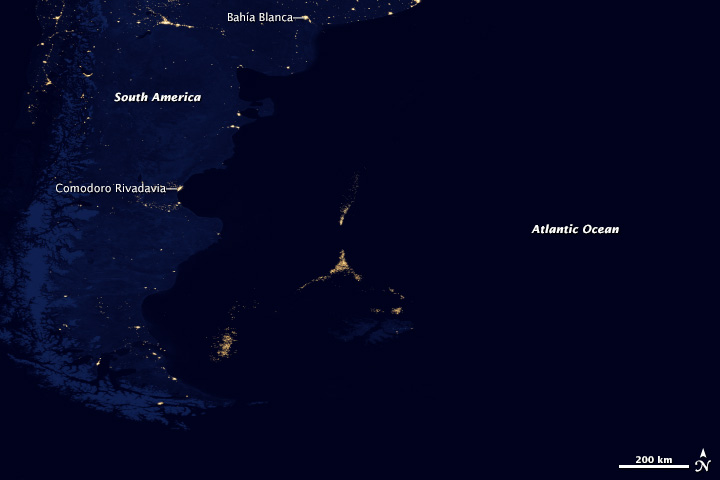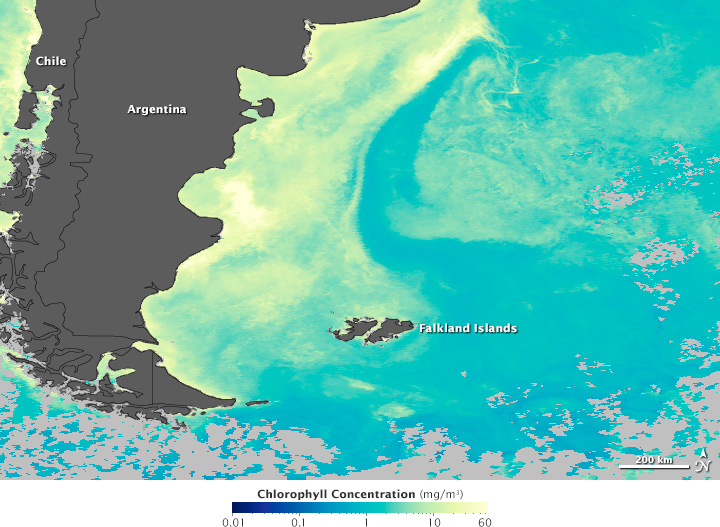Page 3 of 3
Re: APOD: Southern Ocean Sky (2011 Jul 04)
Posted: Tue Jul 05, 2011 10:15 am
by terrastro
Locutus76 wrote:
The less-than-a-second flare that you describe as a lens flare is not what I and others see as the geo-satellite. The satellite is a tiny little dot seemingly moving to the upper right and it is already visible from about 1:30. It is close to the flare at 1:50, slightly to it's right.
I see. I reckon that one is a stuck (hot) pixel.
[Edit] No it cannot be a hot pixel because it is slowly moving. A very interesting find

[/Edit]
Re: APOD: Southern Ocean Sky (2011 Jul 04)
Posted: Tue Jul 05, 2011 4:46 pm
by merrymargaret
Brilliant piece of work. Thank you! (Darned if I could find that geosynchronous satellite tho.

)
Re: APOD: Southern Ocean Sky (2011 Jul 04)
Posted: Tue Jul 05, 2011 5:35 pm
by Locutus76
merrymargaret wrote:Brilliant piece of work. Thank you! (Darned if I could find that geosynchronous satellite tho.

)
I tried to mark it as clearly as I can on a screen capture. Hope you'll be able to find it now...
The lower red circle marks the small flash that appears at around 1:50, the one above is the area of the sky you have to watch meticulously. Good luck!
http://farm7.static.flickr.com/6019/590 ... c8f3_b.jpg
Re: APOD: Southern Ocean Sky (2011 Jul 04)
Posted: Wed Jul 06, 2011 2:20 am
by IGNEOUSrockNroll
In the upper right corner during the shot running 0:01 until 0:05 and then again 0:11 to 0:44, there is another dot that looks like a star but never moves. Is this a dead pixel or a satellite? If it were a pixel, I imagine I would still see the spot even as the clouds roll in, but at that time it becomes hidden behind the clouds and then reappears as the sky clears.
Re: APOD: Southern Ocean Sky (2011 Jul 04)
Posted: Wed Jul 06, 2011 3:20 am
by carina
"Flashing green-yellow lights of fireflies are a common sight in June & July."
Except we don't have fireflies down here. Much to my children's dismay.
Re: APOD: Southern Ocean Sky (2011 Jul 04)
Posted: Wed Jul 06, 2011 8:40 am
by tct
At about the 1:50 mark a bright spot moves from left to right at a speed slower than the many meteors. My guess is a satellite, possibly the International Space Station?? It can be seen about 60% of the way up and 70% of the way from the left edge.
Re: APOD: Southern Ocean Sky (2011 Jul 04)
Posted: Sat Jul 09, 2011 10:55 pm
by aikixtal
Scottt Holder wrote:What is the bright greenish object on the horizon starting at 0:44?
Speaking of :44, immediatelly before :44 there's a streak going up just right of center. What do we think that is?
Re: APOD: Southern Ocean Sky (2011 Jul 04)
Posted: Sun Jul 10, 2011 5:03 am
by NoelC
I can finally comment on this wonderful piece of work...
This extraordinary time lapse was judged the grand prize winner by myself, Greg Parker, and David Malin in a recent international astroimaging competition.
Last month, Alex's video bettered the submissions of top amateur astronomers from all over the world who sent in hundreds of stunning world-class stills and video. It won Alex an all-expenses-paid trip to Tenerife, Canary Islands to attend the Starmus Festival. Besides rubbing shoulders with top scientists, astronauts, and cosmonauts, Alex got 1 hour imaging time on the 10.4 meter Gran Telescopio Canarias (GTC) at the European Northern Observatory (ENO). He has offered me the privilege of working with him on processing that GTC data into an image, and let me just say this: It's good.
Congratulations, Alex on a well-deserved win. Keep up the good work!
-Noel
Re: APOD: Southern Ocean Sky (2011 Jul 04)
Posted: Mon Jul 11, 2011 5:11 am
by MR
Being from this area, I have seen these ships and fishing vessels many a time. I look forward to visiting the northern hemisphere soon and seeing Orion the so called "right way up" for the 1st time in my life. Great video!
Re: APOD: Southern Ocean Sky (2011 Jul 04)
Posted: Mon Jul 11, 2011 10:38 am
by Indigo_Sunrise
NoelC wrote:I can finally comment on this wonderful piece of work...
This extraordinary time lapse was judged the grand prize winner by myself, Greg Parker, and David Malin in a recent international astroimaging competition.
Last month, Alex's video bettered the submissions of top amateur astronomers from all over the world who sent in hundreds of stunning world-class stills and video. It won Alex an all-expenses-paid trip to Tenerife, Canary Islands to attend the Starmus Festival. Besides rubbing shoulders with top scientists, astronauts, and cosmonauts, Alex got 1 hour imaging time on the 10.4 meter Gran Telescopio Canarias (GTC) at the European Northern Observatory (ENO). He has offered me the privilege of working with him on processing that GTC data into an image, and let me just say this: It's good.
Congratulations, Alex on a well-deserved win. Keep up the good work!
-Noel
CONGRATULATIONS, ALEX!!!!!

Re: APOD: Southern Ocean Sky (2011 Jul 04)
Posted: Mon Jul 11, 2011 11:21 pm
by astrotasmania
Fantastic footage, Alex, from a great vantage point.
The bright lights are most likely fishing boats with night time fishing lamps (squid boats) as well as other marine vessels.
http://www.shevillmathers.id.au
Re: APOD: Southern Ocean Sky (2011 Jul 04)
Posted: Tue Jul 19, 2011 6:08 am
by MarkL
Matt wrote:I live in the general area these were taken...
We ALL live in the general area where these were taken....
Re: APOD: Southern Ocean Sky (2011 Jul 04)
Posted: Tue Jul 26, 2011 3:43 am
by lepton
MarkL wrote:Matt wrote:I live in the general area these were taken...
We ALL live in the general area where these were taken....
Really? Maybe location wise, but, definitely not orientation wise.

Re: APOD: Southern Ocean Sky (2011 Jul 04)
Posted: Thu Dec 01, 2011 6:26 am
by Guest
doomsauce wrote:mrhappy99 wrote:If you look closely, you can make out a geosynchronous satellite from the 1:31 mark to about 1:52. It's faint, but you look about two thirds up from the horizon, and about 80% of the way from the left side, you'll see it remain still while all the other celestial objects pass by it. Because it's the only stationery thing in the sky, it actually appears to be moving 'against the grain'.
It took me awhile to find it but that's really cool.
Took us a while too... at first we were misled by something that looked like what you were talking about in the middle of the screen... turned out to be a dead pixel on my brother's monitor. *lol*
Re: APOD: Southern Ocean Sky (2011 Jul 04)
Posted: Tue Jan 03, 2012 9:36 am
by Rinkesh
im confused....thats what the view would like like in that location (the stars!!!???)? it looks unreal. or am i too used to light pollution.
Re: APOD: Southern Ocean Sky (2011 Jul 04)
Posted: Thu Oct 31, 2013 7:35 pm
by neufer
astrotasmania wrote:
Fantastic footage, Alex, from a great vantage point.
The bright lights are most likely fishing boats with night time fishing lamps (squid boats) as well as other marine vessels.
http://www.shevillmathers.id.au
http://earthobservatory.nasa.gov/IOTD/view.php?id=82271 wrote:
Something Fishy in the Deep, Dark Ocean
October 31, 2013
<<In December 2012, NOAA and NASA released
a new map of the Earth at night. Built with data from the Visible Infrared Imaging Radiometer Suite (VIIRS) on the Suomi NPP satellite, this revision to the
iconic “night lights” map offered better clarity and resolution than ever before, and much more sensitivity to light.
Among the surprises turned up by the new map, VIIRS found something fishy off the coast of Argentina. About 300 to 500 kilometers offshore, a city of light appeared in the middle of the South Atlantic Ocean. There are no human settlements there, nor fires or gas wells. But there are an awful lot of fishing boats. Adorned with lights for night fishing, the boats cluster along invisible borders: the edge of the continental shelf, the nutrient-rich Malvinas Current, and the boundaries of the exclusive economic zones of Argentina and the Falkland Islands. The night fishermen are hunting for Illex argentinus, a species of short-finned squid that forms the second largest squid fishery on the planet.
The fishery is fueled by abundant nutrients and plankton carried on the Malvinas Current. Spun off of the Circumpolar Current of the Southern Ocean, the Malvinas flows north and east along the South American coast. The waters are enriched by iron and other nutrients from Antarctica and Patagonia, and they are made even richer by the interaction of ocean currents along the shelfbreak front, where the continental shelf slopes down to the deep ocean abyssal plain. “Squid aggregate in high concentrations at the shelfbreak because it is a very productive area during austral spring and summer,” said Marina Marrari, a biological oceanographer with Argentina’s Servicio de Hidrografia Naval (Hydrographic Service). At the shelfbreak front, microscopic plant-like organisms—phytoplankton—explode in population in various seasons. This grass of the sea feeds zooplankton and fish, which then become food for Illex argentinus and other marine creatures. Working in these high chlorophyll areas, fishermen light up the ocean with powerful lamps that attract the plankton and fish species that the squid feed on. The squid follow their prey toward the surface, where they are easier for fishermen to catch with jigging lines.
In the South Atlantic, Argentine and Falklands citizens have exclusive rights to fish out to 320 kilometers (200 miles). Ships from other nations work as close to that border as they can to get a share of the squid fishing. “The satellite images are a tool to understand what is happening with the fishery, especially in international waters,” said Ezequiel Cozzolino of El Instituto Nacional de Investigación y Desarrollo Pesquero (Argentina’s national fisheries research institute). “The images allow us to estimate the number of foreign jigging fleets that are fishing Illex argentinus, and to calculate the weekly captures of the species.”


